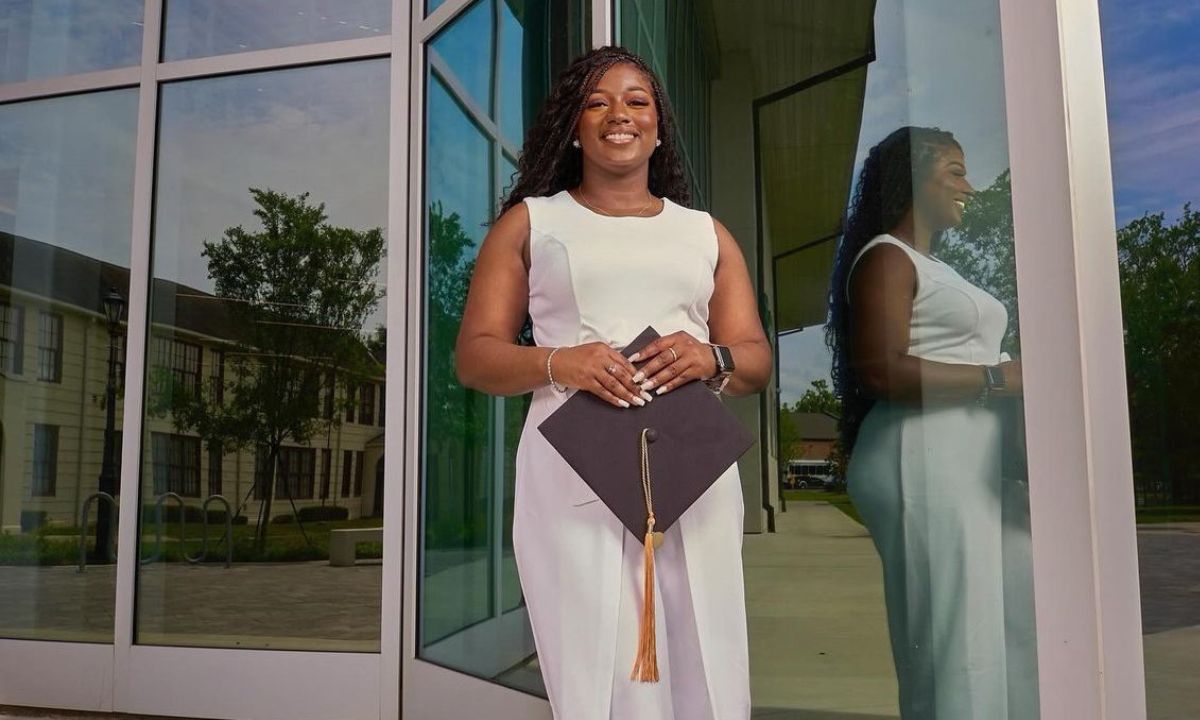Historically Black Community Colleges Have Their Own Distinct History
Historically Black community colleges (HBCCs) are two-year institutions that generally lead to an associate degree.

Kadeidra Henderson is a student at Bishop State Community College, in Mobile, Ala. She didn’t initially care much about the history of her institution — originally, higher education wasn’t in her plans.
“I am 25 years old, and I was trying every way possible not to go to college. I didn’t want the student loans. I didn’t want that,” said Henderson.
When it came to deciding whether or not to further her education, Henderson realized that attending a historically Black community college just seven miles from her high school — Davidson High in Mobile — was a viable option.
”When I did a little bit more research, I saw that you get a bit more money for having a Bachelor of Science, and they only have an Associate of Science. So I was like, okay, I’ll just take the first step. It isn’t hard to go ahead and take the first step that leads you to where you are trying to go.”
Henderson serves as Miss Bishop State, a leadership position on campus that involves giving back to the community and uplifting the students.
Historically Black colleges and universities are such an institution in the United States that they are commonly referred to by an acronym — HBCUs — but it’s a lesser-known fact that two-year programs exist to serve this student population as well. Though the HBCU experience is typically tied to prestigious four-year schools like Howard University, Spelman College, and North Carolina A&T, some say the importance and unique aspects of two-year Black institutions are overlooked.
Historically Black community colleges (HBCCs) are two-year institutions that generally lead to an associate degree. According to Complete College, “HBCCs are defined as institutions with a historical mission of serving Black students that predates the 1964 Civil Rights Act.”
H.M. Kuneyl, a Ph.D. student at the University of Illinois, researches the history of community colleges and their unique role within the broader landscape of higher education.
Kuneyl spent time at a community college in Texas earlier in her academic career. While researching, Kuneyl realized that many pieces were missing from the history of HBCCs.
“I’m thinking, well, wait a minute, what does it look like to be an institution that is theoretically open access in a time of the Jim Crow and a time of segregation, where is this story?” she said. “So that is what led me to focus on the history of HBCUs, or what we call them, HBCC, historically Black community colleges.”
Florida once had 12 Black junior colleges that closed in the aftermath of the Civil Rights Act of 1964. Research showed certain shared characteristics for all 12 of these institutions.
“All of these colleges are located in the southern former Confederate states. They were developed and began serving students during segregation, and most of those were actually developed after Brown v. Board of 1954 and 55, so that tells you a lot about why these institutions were built and who they were intended to serve,” Kuneyl said.
“I think the way that I looked at college was completely wrong, but this community college that I started going to made me have a whole different perspective,” Henderson said. “Your education will help you make money rather than lose it, so when I started going to Bishop State, I started getting involved. They have so many different opportunities for you.”
Affordability makes community colleges attractive, and HBCUs can play an important role in helping students shore up their academics before heading to another institution, according to Gregory Price, a professor of economics at the University of New Orleans.
“Community colleges likely have an advantage in remediating any academic deficiencies. If you’re weak in math and reading, community colleges are probably better able to address those shortfalls. And they can do it at a lower cost because operational expenses are probably lower,” said Price.
According to a UNCF report, many Black students face barriers when it comes to accessing college and achieving success. These obstacles include insufficient academic readiness, limited access to necessary technology and resources, as well as higher chances of balancing caregiving duties and full-time employment.
“Only 57% of Black students have access to the full range of math and science courses necessary for college readiness, compared to 81% of Asian American students and 71% of white students,” the report reads.
After graduation, Henderson plans on attending Tennessee State University, an HBCU in Nashville, to study dental hygiene. She feels the relationship between Bishop State and other HBCUs in Alabama and surrounding areas isn’t as pronounced as it could be.
“We have so many career fairs at our school, but none of them are HBCUs. We’re close to Alabama A&M, and I never see their table,” she said. “We don’t have the HBCU tables that we need. I think we all have to do our own research on that. Even our advisors, they’re the ones who are looking up HBCUs for us.”
This relates with Kuneyl’s research, which highlights how the historical narrative of education often overlooks the experiences of racially minoritized students, especially in community colleges.
“There’s a lot of interest in helping racially minoritized students, but there wasn’t a lot of history about the institutions that serve these students. In particular, community college history is often told from a northern white perspective,” said Kuneyl.
Get stories like these delivered straight to your inbox. Sign up for The 74 Newsletter

;)